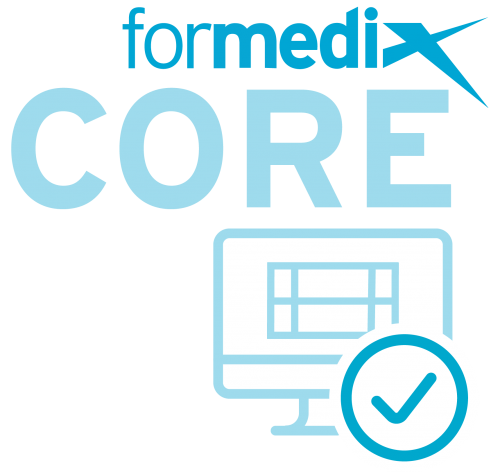The company’s ryze technology combines a clinical MDR and study automation platform, designed to accelerate and optimize design and execution of trials.
This article is taken from Outsourcing-Pharma.com, "Formedix launches cloud-based clinical metadata repository" [digital edition available here].
Clinical study teams are perpetually on the hunt for ways to improve efficiency, speed startup, and optimize trial execution. In an effort to meet the demand for such solutions, Formedix has launched ryze, which blends a cloud-based clinical metadata repository (MDR) and trial automation platform. Gilbert Hunter, Formedix customer success manager, spoke with Outsourcing-Pharma about the technology and how it might serve sites and sponsors to streamline studies.
OSP: Could you please share some of the key challenges with the clinical trial design process?
GH: When thinking about the challenges, it’s important to consider the standard data models published by the Clinical Data Interchange Standards Consortium (CDISC), which defines all the data structures of a clinical trial. This includes the submission package that is required by regulatory bodies, such as the US FDA and Japanese PMDA.
Although the models themselves are well defined, they describe disparate data structures, often leading to a lack of end-to-end traceability of data. Additionally, while the models describe the formats required, they do not in themselves facilitate the automation of a clinical trial submission from start to end.
Another challenge we see at the moment is that metadata mappings can’t be quickly and easily defined by non-technical users, creating difficulties with resourcing. Metadata mappings (files) are not always human readable; they’re machine-readable; as such, the metadata mapping language can be difficult to interpret and implement.
As a biostatistician, you need to be able to provide collected [raw] clinical data in the required submission formats. Systems exist for converting collected data for regulatory submission, but they’re often extremely complex and don’t produce reusable mapping metadata.
Typically, manual double programming or double mapping is required to make sure mappings have been done accurately and to avoid errors. The reusability of these mappings is extremely limited, and without standardized mappings, they need to be created from scratch for each new study. This manual, time-consuming process is understandably prone to errors and often results in 8-12 week delays in dataset delivery.
OSP: Where in the study design/build process do stumbling blocks typically occur?
GH: There are many stumbling blocks in study design and build that can create challenges further down the line. A major challenge is ensuring compliance with CDISC standards throughout the trial; often this is left to do at the end, just before submission, resulting in significant delays in getting trials submitted, which can ultimately delay the approval of potentially life-saving drugs.
Another challenge is that current systems hinder data teams from finding the existing and previous metadata they need for current studies or standards they’re trying to design and build. People tend to work in silos. Content is, therefore, often kept by multiple teams in various locations, and systems don’t document if you’re working on the most up-to-date version of a file, or if it’s been superseded. It’s, therefore, easy for duplicates to be created and diverge.
Designing case report forms (CRFs) can also be an obstacle. CRFs need to be designed and approved quickly by relevant parties for use in the trial. A problem here is that until stakeholders can see how forms look and work in the electronic data capture (EDC) system, they don’t know what changes are needed, so the often iterative review and approval cycle can take months.
Additionally, if the review process is managed in Excel spreadsheets, files constantly need to be updated to track changes, and there are typically numerous email threads between stakeholders to keep track of. It is then challenging to determine why certain changes were made.
Furthermore, with disparate systems, it’s difficult to see how a potential change may impact other studies. These factors can be all cause major holdups in finalizing the CRFs and building the EDC.
Speaking of EDCs, it can take months of building until they are ready to collect trial data, causing significant delays getting the trial started. Also, you might get tied into using one particular EDC system, which means you can’t use different EDCs to suit different stages in the trial process. For example, some EDCs might be better at handling a certain therapeutic area, or others might be more cost effective at a particular phase of the trial. Without the flexibility to use different EDCs, you won’t have the ability to easily adapt.
There are also other efficiency issues with mapping raw datasets to study data tabulation model (SDTM) datasets, which may need to be done manually. Without efficient strategies being planned from the start, there’s typically a long wait for trial data to be converted into the correct format so it can be interpreted and analyzed; this is problematic because seeing initial data early is important to track the efficacy and safety of a drug in real time.
Trials need to determine if a drug is safe, if people are having side effects, if the drug is working, and if early changes are needed to combat any warning signs. In order to provide the best care to patients in a trial, systems need to be in place for trial data to be available as quickly as possible.
However, one of the biggest stumbling blocks comes when organizations must submit trial metadata to governing bodies like the FDA. CDISC standards must be adhered to throughout, and organizations need to present all the relevant data formats for the trial stipulated by governing bodies. With additional back and forth between companies and governing bodies to get drugs approved, new treatments could be delayed from getting to patients.
OSP: Of the problems mentioned in the first two questions: Have all the obstacles put up by the COVID-19 pandemic complicated these issues further?
GH: It is not necessarily that the COVID-19 pandemic has complicated these issues, but it has certainly highlighted them and brought them firmly under the spotlight. The requirements of clinical trials evolved during the COVID-19 pandemic; with time of the essence for COVID-19 vaccines, there was a demand to set-up and conduct trials as quickly as possible, while maintaining a high level of safety.
In that regard, COVID highlighted the need for speed in clinical trial processes and showed us how efficiently this can be done. For instance, minimizing the time taken for clinical study build, the time taken for approvals and the time for trial data to be available for review have become crucial factors in aiding the progress of COVID vaccine roll outs.
OSP: How do trial teams typically use technology to streamline their study design process?
GH: The life sciences industry strives to approve more lifesaving products as quickly as possible to drive improvements in global health. Current clinical trial and regulatory submission processes are a major roadblock to this.
Technology solutions exist, however, each different solution tackles a narrow part of the problem, so multiple systems are required. And whilst paper-based trials are not common anymore, some companies still rely on traditional methods like spreadsheets to design and build trials. This introduces inefficiencies and siloes.
We see organizations take different approaches to deal with this challenge. Some use a clinical metadata repository (MDR) to aid study design. This allows the standardization of metadata and provides a central place for it to be managed, maintained, and reused.
Other organizations use third-party technology platforms in conjunction with their MDR to provide additional services. However, these don’t work as part of a fully connected system, and constitute separate platforms providing different services.
OSP: Kevin Burges [Formedix head of product management] mentions the gradual shift from paper-based setup to digital. How does digitizing the process help things along—and does this create any new problems?
GH: Digitizing the process has many benefits on quality, control and speed of clinical trial design and build. I’ll go through each one. First, it improves quality by removing a lot of the manual, error prone work. With paper-based studies, you’re relying on someone to write down or copy something correctly. But by going digital you eliminate those manual steps and can run digital validation checks to avoid mistakes in the digital systems.
Second, you have greater visibility and control over the metadata due to the digitized review and approval of changes. Everything is documented and traceable. And third, you can get your study set-up faster with digital systems due to streamlining improvements, such as content reuse.
With the right systems, you can achieve up to 70% reuse, saving months in the setup process. If you have a paper-based set-up you can’t reuse content, so study design and build take longer as it’s a manual process started from scratch each time.
These benefits result in improved decision-making opportunities. With a paper-based study, you would never have the data insights and instant access to safety and efficacy reports at such an early stage as you do with a digital system. Digitization, therefore, provides the potential to more quickly identify if there are widespread side effects, or worse, life threatening issues with a proposed new drug.
But, digitization isn’t always straightforward; it comes with initial challenges for organizations to overcome. There’s a big hurdle at the beginning, and you need the time, resources and inclination to follow through and reap the long-term benefits. As an example, if organizations don’t have existing standards in place, these will need to be created from scratch. But the beauty is that once they are done, they will live in the MDR and be available for reuse thereafter. This takes time and energy upfront and could be seen as delaying existing work projects, but ultimately saves time again and again, with the potential to impact trial submissions and drug approvals or roll-outs in the long-term.
Making the switch from paper-based or other internal processes to a new system often requires a culture shift within organizations. Some people often don’t want to change the way they’re used to doing things, so it’s up to change leaders to champion the digital shift and influence stakeholders in their organization to see the long-term benefits.
OSP: Please share some of the challenges study teams have faced regarding the need to work with multiple digital systems and the occasional problems when one ‘system’ isn’t completely integrated or compatible with another connected system.
GH: The biggest challenge organizations with multiple systems face is training. Working with multiple systems means people need training across them all, which takes time and resources.
Poor integration between systems means a lot of study design elements have to be worked through to completion in the target system. Users therefore need to be experts in both platforms to be able to ‘translate’ from one system into another. It could also be that the two systems are incompatible, so you could be double keying information or having to run an external script to perform some actions.
Another challenge we see is with the API. Many systems don’t actually have an API framework, or if they do it might be too immature. You may need to manually move files between systems, which introduces the possibility of human errors, whereas an API takes away this risk.
OSP: Please tell us about ryze—how it works, what types of studies and trial environments it’s best suited for, and what common problems with trial set-up and operation it helps lessen or avoid.
GH: We developed ryze with the end user in mind. It’s the only solution able to deliver a full suite of standards management, study build, multi-EDC automation, and data automation for regulatory submission - all in a single, scalable web platform.
We wanted ryze to help people to minimize the time it takes to design a study from concept all the way through to data availability, and this is exactly what it does. It was also crucial for us to develop ryze with CDISC at its core so you can build datasets quickly and accurately. ryze supports all current and previous versions of CDISC standards and is kept aligned with changes, enabling effortless compliance.
 The ryze clinical MDR provides a single place for all study metadata to be managed, maintained, and reused. Once metadata content has been approved, it can be shared and reused across future standards and studies by teams globally.
The ryze clinical MDR provides a single place for all study metadata to be managed, maintained, and reused. Once metadata content has been approved, it can be shared and reused across future standards and studies by teams globally.
This saves teams from having to search for the required content, rely on others to provide it, or create it from scratch. Now teams can search in one place to find and reuse approved content, achieving up to 70% reuse of eCRFs, edit checks, datasets, mappings, and more.
The ryze platform is unique for several reasons. It is the only solution used by CDISC to design CDASH-compliant eCRFs. They create, visualize, edit and approve eCRFs in ryze, then export them in ODM-XML to publish on their CDASH eCRF portal.
In addition, you can transfer metadata between ryze and various third-party platforms - such as EDCs - and continually reuse it. There’s no need to redesign, retype or retest content if you switch EDCs, for example. Just move your assets and reuse them. ryze is the only EDC vendor neutral platform that gives this level of reusability across systems.
ryze is also the only commercial off-the-shelf solution that’s available for use immediately, with very little configuration required. ryze can be very quickly tailored to your specific needs, with no long or complex implementation as is typically the norm.
In one of your earlier questions, I talked about some stumbling blocks that often occur in study design and build. We had these stumbling blocks front of mind during the development of ryze and, specifically, wanted to address them to make the process easier.
I’ve outlined below how ryze helps to overcome some of these blocks:
- One was designing CRFs: ryze is the only clinical MDR that lets you design and visualize eCRFs inside the platform. You can see exactly how eCRFs look, and how they work for leading EDCs - without having to
build your EDC and go back and forth between platforms to edit and do review cycles. This is all done in the ryze platform, saving huge amounts of time. - Another was performing SDTM mappings and converting datasets to SDTM: ryze replaces cumbersome legacy mapping processes with a new purpose built language and user interface. It provides the flexibility to handle any type of mapping in a concise and easily understood way. Mappings can be standardized, so they can be easily reused.
- As I mentioned earlier, the ryze platform is built on CDISC standards and uses CDISC metadata templates to ensure compliance throughout the end-to-end design and build process. It enables you select the relevant version of CDISC required for your study, meaning that the system has inbuilt flexibility.
- This also helps create submission deliverables. The various file types required for regulatory submission can be created at the click of a button in the ryze platform. For example, define.pdf, define.xml, annotated CRF and SDTM datasets.
- Another thing that ryze helps you to do is building the EDC. With ryze, you can build your study in a fraction of the time it normally takes – in as little as six weeks. Building studies from standardized content not only speeds up design, but also increases quality and consistency across studies and standards.
- Also, the ability to see what CRFs look like for your EDC in ryze, and the ability to make changes accordingly at design stage, rather than waiting for EDC build, also speeds up EDC build as the approval process is accelerated.
- And lastly, ryze provides near-immediate safety and efficacy insights during an ongoing trial, enabling rapid trial adaptation. Spotting problems with a product early in the trial process allows trials to be ended early, where appropriate, or adapted as needed.
Trial participants will see quality of life benefits, as the increased efficacy and safety visibility allows rapid response to effectiveness and safety issues. This not only has crucial health and life-saving benefits, but it also enables savings in development time and costs. ryze, therefore, gives the industry the potential to deliver the maximum number of life-changing products in the shortest time possible.
The overall bigger picture is that ryze helps to reduce the time from drug discovery to approval, meaning life changing products get to the market faster, and more lives are saved or extended. A US National Institutes of Health study concluded that in cancer trials, for every year the time to drug approval was shortened, there would have been a median number of life years potentially saved of 79,920 worldwide per drug. If drug discovery to approval fell to 5 years, the median number of life‐years saved per drug would have been 523,890 worldwide.
Plus, each day earlier a product gets to market can lead to an additional $2.7m [USD] in sales revenue. With a solution able to shorten timelines, pharma and biotech companies, and CROs will be able to increase revenues and generate greater margins and profits.
OSP: Regulations are always changing, and teams working with international studies have a lot to keep track of. How does your tech help them wrestle with regulatory issues?
GH: We understand and appreciate the impact of changing regulations on organizations. To make managing trial design and build within the guidelines easier, the ryze suite supports previous versions of CDISC required by the FDA, and also changes to CDISC content standards. Any metadata content imported into the MDR can be validated to ensure full compliance with relevant CDISC standards.
Formedix has over two decades of CDISC standards knowledge and was involved in developing many key features in the CDISC ODM and Define models. Formedix is also a member of the CDISC Data Exchange Standards team. Because of this, we’re constantly on top of any changes to regulations to implement them into ryze. This means that organizations using ryze will always be compliant with CDISC standards.
About Gilbert Hunter, customer success manager at Formedix

Gilbert joined Formedix over seven years ago as a Technical Writer. Four years ago, the knowledge gained from content development together with his customer service skills marked him out for transition to the Professional Services Team.
In his current role, Gilbert provides CDISC and software training, support and consultancy services to Pharmaceutical, Biotechnology and CRO organisations. He helps them save time and money by making their clinical trial design and regulatory submissions more efficient.







